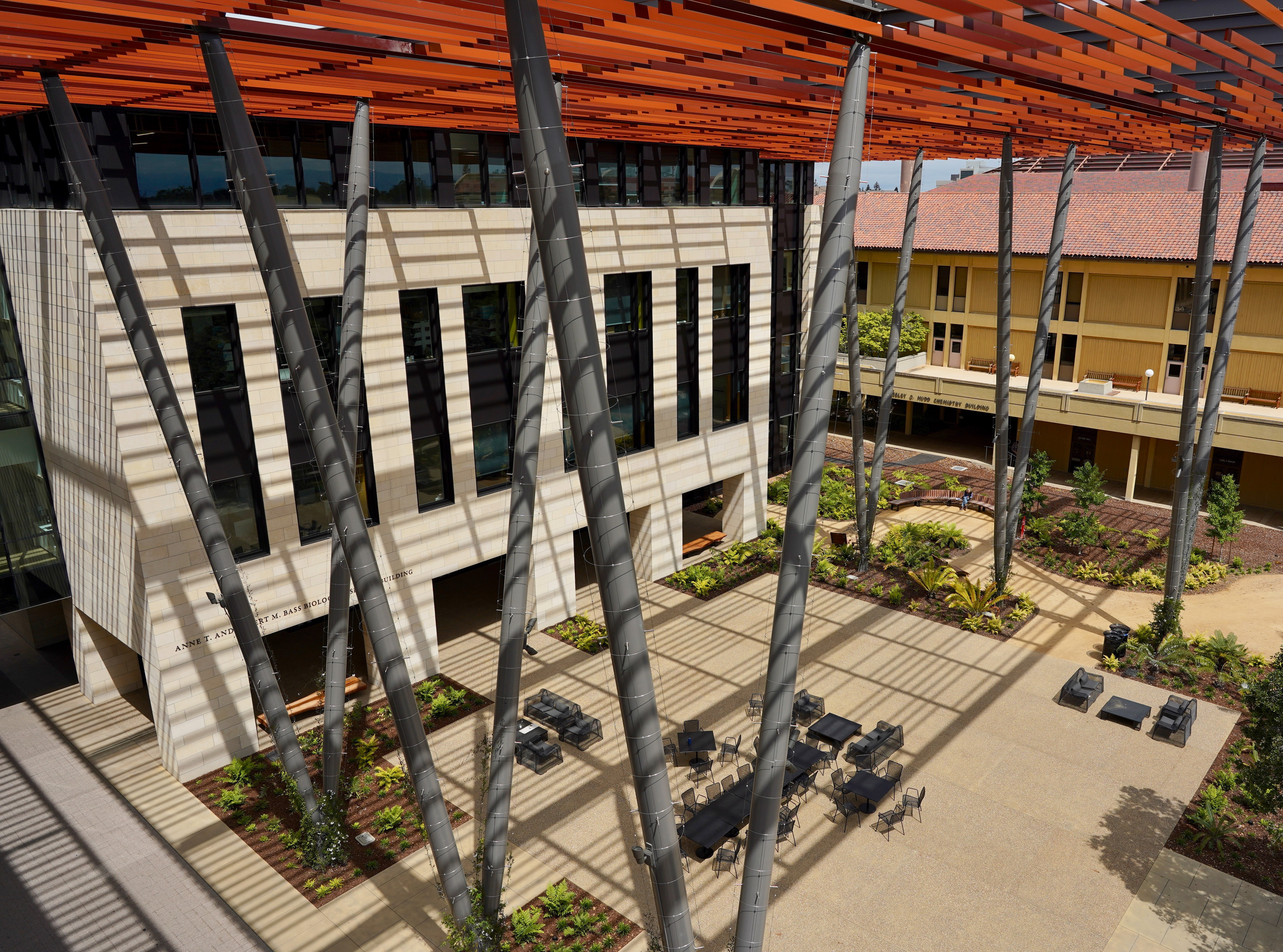Situated behind the Gates Computer Science Building in what will soon become the science quad, the newly constructed Anne T. and Robert M. Bass Biology Research Building is positioning itself to pave the future of science, pushing for broader, more interdisciplinary research. Straddled between the engineering quad and the medical school, Bass Biology brings together the previously widely spread out biology department in a more centralized position.
The building, funded by donations from Anne Bass M.L.A. ’07 and Robert Bass M.B.A. ’74, involves a more open floor plan and utilizes large amounts of natural lighting, with several communal spaces situated throughout the structure.. The building is separated into two parts, and both sides possess a variety of labs in fields ranging from molecular and cellular biology to ecology. In the middle stands a giant interactive display, controlled by a touch screen panel beneath it, showcasing art and biological patterns.
When asked about the changes, biology and environmental science professor Gretchen Daily ’86 M.S. ’87 Ph.D. ’97 said the move into the new building has been wonderful. She focused on how way the building is organized to best encourage collaboration and innovation.
“A lot of the most exciting research is at the interface of different fields,” Daily said “This new building brings together people in a lot of different areas who have deep expertise, which we ought to mix up and fuse to make advances in new domains. That’s just the way of science, of teaming up and working together.”
Biology professor Dmitri Petrov agreed, mentioning that the new building has facilitated much more interaction between labs in common spaces like the kitchens and the new cafe across the street where people can share meals and chat.
“Stanford is amazing [because of] the amount of people here, and the greatest benefit is in people interacting with one another, sharing expertise,” Petrov said. “Get coffee in the same place, bump each into each other — suddenly there’s a spark.”
Petrov added that the new organization allows for more advanced studies and better lab spaces as well as greater integration between those who have experimental work and computational work.
Another aspect of the Bass building is its location, something which was heavily praised by biology professor Tadashi Fukami.
“It seems like we can now work more with researchers at the medical school,” Fukami said.“For example, we just published this paper related to bacteria in our stomach which are both good and bad which can help our health but can cause stomach cancer. We worked with Manuel Amieva. They specialize in studying this bacteria, and we did some computer simulation modeling with them. It’s just so much easier to walk over [to the medical school].”
Fukami also mentioned the benefits of having the extra space, allowing the department to have some flexibility in hiring new staff.
“There are two or empty three spaces, purposely empty spaces in this building, so that new professors, when we hire new professors, can have that space,” Fukami said.
Daily also brought up the advantages of the new building’s far more open and naturally lit plan, compared to its predecessors like Herren, one of the old Biology buildings.
“We’ve worked around campus and in the psychology building right next to math to quantify just a brief experience with nature, even a 50 minute walk,” Daily said. “We’ve [seen that] cognitive function goes up dramatically.”
Contact Mihir Patel at ‘mihirp’ at stanford.edu.
